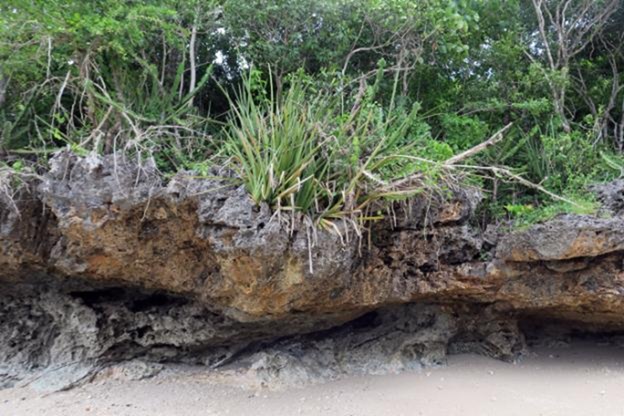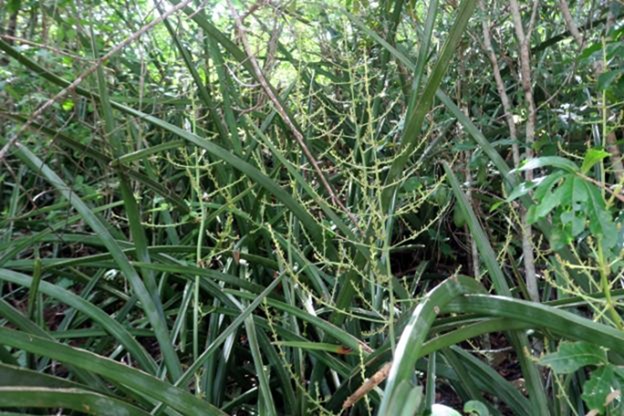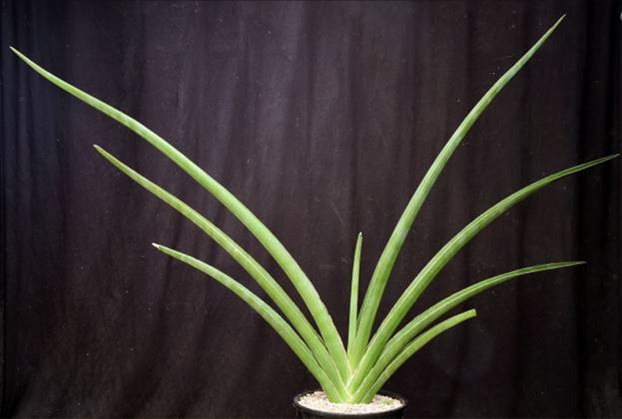| |
Sansevieria perrotii Warburg |
| Protologue: |
Tropenpflanzer 5: 191 (1901). |
| Subgenus: |
Paniculatus |
| Group: |
Sansevieria ehrenbergii |
| Etymology: |
This species is named for B. Perrot, a Mauritanian living in Madagascar who collected plants in Tanzania. |
| Distribution: |
Southeastern Tanzania in the vicinity of Lindi, with a possible extension into northeastern Mozambique. |
| Brief Description: |
This short caulescent species has an erect stem to 20 cm tall by 2.5 cm in diameter and covered by leaf bases. There are 8 - 12 distichous leaves, ascending or spreading, cylindrical, laterally slightly compressed, with a deep and wide groove on the upper face, 91-152 cm wide, 1.1-1.5 cm thick, narrowed gradually to a whitish hard acute tip, margin reddish-brown, edged white. The inflorescence is up to 120 cm high or greater and paniculate with 2 - 4 small, delicate flowers per cluster. |
| Similar Species: |
Sansevieria perrotii once was considered merely another form of Sansevieria ehrenbergii, at least in the larger distribution concept of that species. Its wide leaf spread makes it distinct in eastern Africa and only is matched by Sansevieria pfisteri from southern Angola, which is in subgenus Sansevieria. Sansevieria robusta, a species of similar stature and leaf color, has more erect leaves and occurs well to the north and west of the Indian Ocean. |
| |
| |

Sansevieria perrotii growing just above high tide level of the Indian Ocean in Lindi Bay near Lindi, Tanzania.
|
| |

Sansevieria perrotii growing in coral rocks east of Lindi, Tanzania.
|
| |

Sansevieria perrotii in cultivation.
|
|
| |
| |
|
|
| |
| |
|
|

